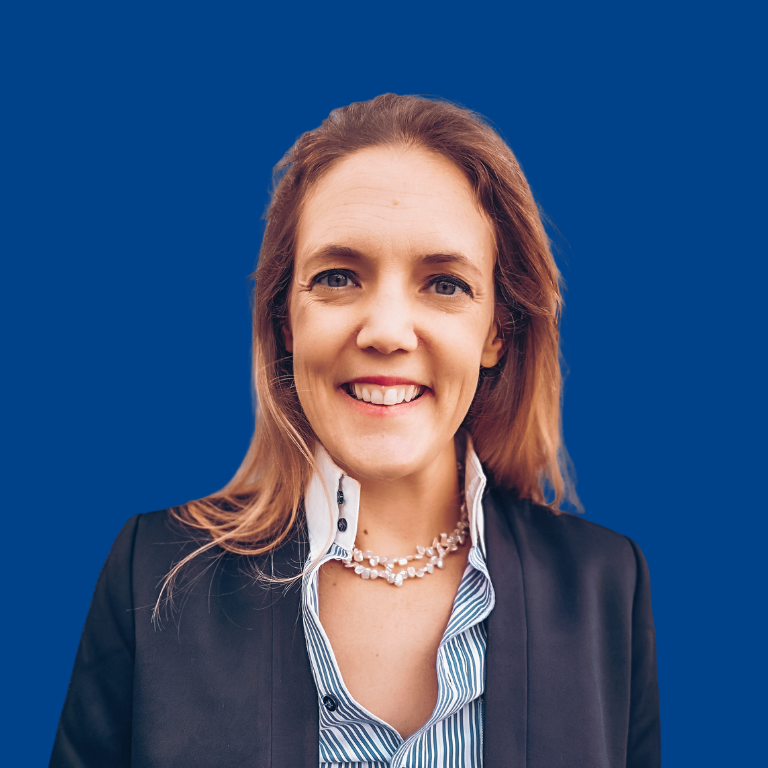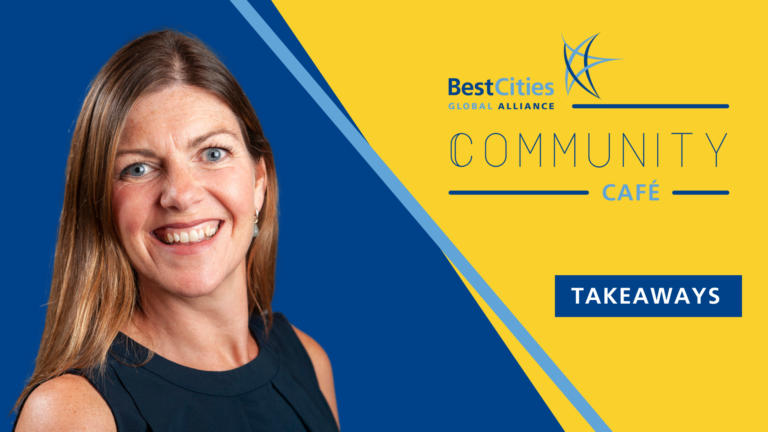On 17 June, BestCities hosted their second online Community Café about the importance of cultivating community. Themed “When Communities Collide”, the gathering offered a reminder that forging relationships, providing value and cultivating a sense of belonging are paramount to maintaining a strong and loyal association network… one that will endure long after the annual meeting is over.
This “event aftercare” has always been necessary, but now it’s critical with meetings increasingly transitioning to hybrid or virtual models. While attendees around the world might tune into a scheduled congress, what happens after the event ends and everyone goes back to their lives? How do we create engagement that lasts?
Four industry leaders joined the Community Café, and their collective insights uncover several ways association organisers can establish strong and loyal communities.

Caroline Teugels
PodiatryInternational.com

Daniel Palomo
Houston First Corporation

Kai Troll
ASSOCIATIONWORLD

Mathijs Vleeming
Open Social
Create an association portal
Carole Teugels founded PodiatryInternational after realising the only way to advance global podiatry was to create a dedicated online community. “Events bring people together, but without an accessible community that connection won’t endure,” she said. “It’s critical to build a welcoming space that members can visit anytime they desire.”
More than just a website, PodiatryInternational is a portal for podiatrists everywhere, inviting them into an ecosystem that nurtures individual and professional growth. Here, visitors can browse new research and articles related to foot care, find podiatry events or jobs, and take part in a forum where discussions aren’t bound by geography or time zones. The portal also lessens reliance on face-to-face meetings, and provides year-round sponsorship and advertising exposure so members can see the latest products and services offered by industry partners.
Invite members to shape their community
Kai Troll, president of ASSOCIATIONWORLD, recently conducted a survey asking the ASSOCIATIONWORLD community what they would like to see in an engagement platform. The majority wanted a space where they could access resources 24/7 and obtain support to help solve problems. Kai and his team incorporated the feedback and will launch ASSOCIATIONWORLD’s new platform in July.
“Only five to 10 percent of association activities involve events, yet we continue to place so much emphasis on them,” said Kai. “We need to remember that the core business of associations is membership services and community. So, that’s where we need to start focusing our attention.”
Part of cultivating an involved community is understanding what members are looking for. Nonprofits and NGOs are a good example: they host very few events, yet most have fostered a strong sense of belonging and loyalty among members. The reason? They understand what their community needs – whether online education, resources related to financial aid or healthcare, or information on localized chapters.
Like Kai, association leaders can learn what their members seek in a community by sending out surveys. Or, they can convene a focus group of members – making sure to include a range of demographics – and check in quarterly for input.
Think beyond live events (and social media)
The way we build communities is changing drastically. Digital communities have been forming for many years, but the global pandemic has accelerated the transition.
“I believe time-based and in-person events will remain the primary driver for building communities. However, we no longer have to only rely on them,” said Mathijs Vlemming, strategic consultant at OpenSocial. "Today’s associations have many more tools in their toolbox to build their communities in addition to their annual congresses. They are tasked with enabling connections and empowering their members to share and advance knowledge together – not in one location for a couple of days a year, but around the world throughout the year.”
On your own platform you can own and protect your member’s data and customize the member’s user experience, which is critical for engaging and growing your membership in a digital world. But most importantly, with a true community approach supported by digital tools you can stimulate the input and output of your community, ultimately resulting in an increased impact of your association towards reaching your mission. Which is after all what it is all about!
Open Social is a SaaS company that specializes in online community and member management solutions. 10 years ago, the team created Greenwire, which was used by Greenpeace to mobilize 60,000 staff and volunteers in 55 regional chapters around the world. The platform’s goal is to activate, empower and connect members while serving as a hub for meetups and grassroots campaigns.
Another Open Social design is SparkBlue, a platform that facilitates global connections, dialogue and ideation among the United Nation’s 60,000 community members. Here, members can access expert knowledge provided by external partners and take part in knowledge transfer that “sparks” meaningful change.
Greenwire and SparkBlue both feature purpose-built tools for content creation, ideation and collaboration. Unlike other modes of virtual connection, including social media, these hubs are much more efficient at maintaining strong and long-lasting connections, promoting relevant and useful dialogue, and containing education and engagement under each organisation’s branding.
Mathijs shared, "you can not build it and expect that they will come - but build it with them and they are already there."
Encourage sub-communities
Community isn’t just about having members – it’s about encouraging meaningful interaction between them. One way to increase community engagement is to establish sub-communities within the greater network.
“How can you generate value for your members? There are many different ways of communicating, engaging and collaborating,” said Daniel Palomo, director of sales at Houston First Corporation. “The role of the association is to connect the dots and ensure members are aligning on a deeper level.”
While working with a global energy company, Daniel and his team found an ecosystem of social networks embedded within the larger organisation. There was a group dedicated to LGBTQ; another was focused on sustainability. Nurturing these sub-communities is an easy way for associations to add value for their members. After all, members who are part of a sub-community that shares the same passions or interests are more likely to participate in the association on an ongoing basis.
Want to receive more information on the BestCities Global Forum in Madrid? Enter your details below and we will keep you informed once more information becomes available.
